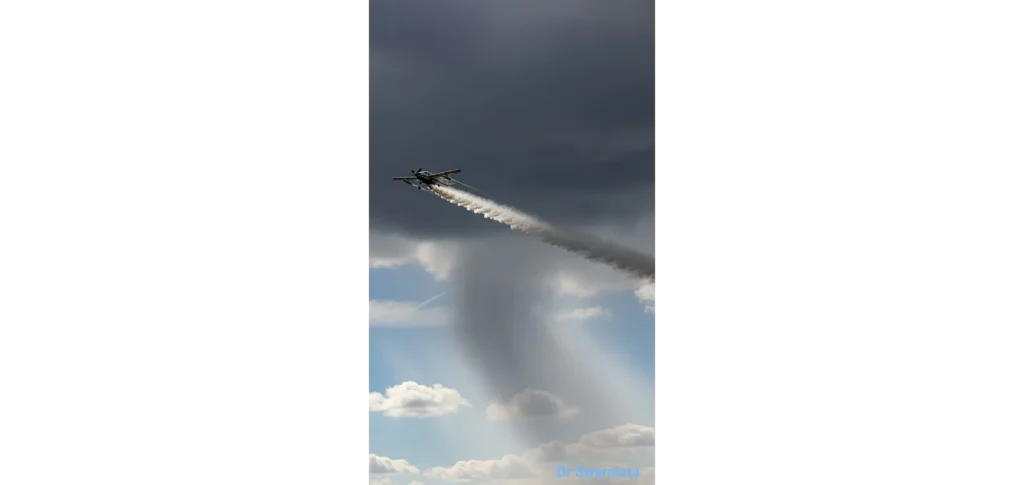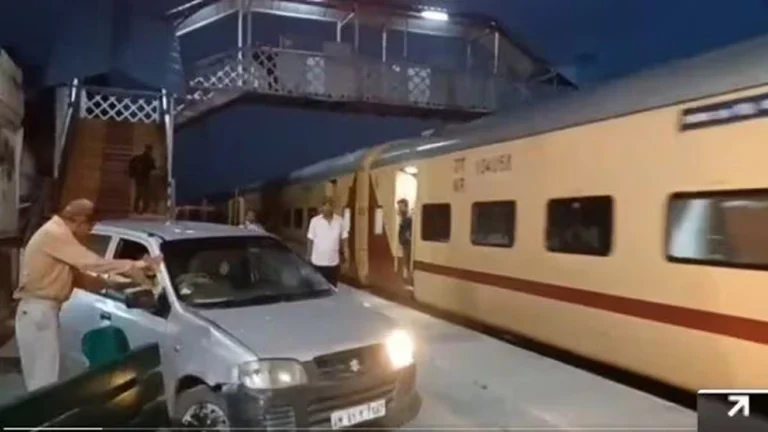
Abstract In October
Delhi’s Cloud Seeding Trials, October 2025: A Promising yet Challenged Approach to Combat Air Pollution” Abstract In October 2025, Delhi conducted its first cloud seeding trials to induce artificial rain and mitigate severe post-Diwali air pollution (AQI ~300–400). Collaborating with IIT Kanpur, the government deployed a Cessna 206H aircraft to disperse silver iodide and sodium chloride into clouds. Despite two trials on October 28, no measurable rainfall occurred due to low atmospheric moisture (10–20%). This study examines the experiment’s outcomes, challenges, and implications for Delhi’s pollution crisis.
1. Introduction
- Background: Delhi’s geography and winter inversions trap pollutants, worsening air quality.
- Objective: Assess cloud seeding’s efficacy as an emergency measure.
- Timeline: Trials conducted on Oct 28, 2025, targeting Burari, Karol Bagh, and Mayur Vihar.
2. Methodology
- Technique: Glaciogenic (silver iodide) and hygroscopic (sodium chloride) seeding.
- Conditions: Clouds at 500–6,000 meters; required moisture: 50–60% (actual: 10–20%).
- Equipment: Modified Cessna aircraft; 16 flares (8 per trial).
3. Results
- Rainfall: 0.1 mm (Noida), 0.2 mm (Greater Noida); none in Delhi.
- AQI Impact: PM2.5 dropped 221→207 (Mayur Vihar), 230→206 (Karol Bagh).
- Cost: ₹3.21 crore for 5 trials (₹1 lakh/sq. km).
4. Challenges
- Meteorological: Dry winter air; unsuitable clouds.
- Technical: Attribution uncertainty; short-term relief.
- Environmental: Chemical risks to soil/water.
- Criticism: “Gimmick”; neglects root causes (stubble burning, vehicles).
5. Expert Insights
- Dr. Akshay Deoras (Univ. of Reading): “Seeding works only during western disturbances.”
- IIT Kanpur: “SOS measure, not a permanent solution.”
- Environmentalists: Address pollution sources, not symptoms.
6. Government Response
- Plan: 9–10 more trials; targeting north Delhi.
- Policies: BS-VI vehicle ban (Nov 1), anti-smog guns.
- Limitations: Regional coordination lacking.
7. Conclusion
Cloud seeding showed marginal short-term benefits but failed to induce rain. Success requires optimal moisture, sustained efforts, and systemic reforms. Delhi must prioritize reducing emissions, not just symptoms.

✅ TL;DR
Delhi’s cloud seeding trials (Oct 2025) faced moisture deficits, offering temporary AQI relief but no rain. Experts urge holistic solutions.
References
- Outlook India (October 28, 2025)
- The Hindu (October 29, 2025)
- India TV News (October 28, 2025)
- Rediff News (October 29, 2025)
- Firstpost (October 29, 2025)
Writer
Dr. Swarnlata Panchal
Associate Professor, Department of Medical Biotechnology
Director – International Affairs, NIMS University Jaipur, India
Honorary Scientist – Community Medicine, AIIMS India
Director – Nicole Ed Pvt. Ltd. (Medical Education)
PhD (Medical Biotechnology) | MBA (International Business)
🔗 Nicole Ed Pvt. Ltd. | Healthcare Researcher & Education Leader
📍 Based on ongoing developments and discussions during the October 2025 Healthcare Summit, Delhi.



